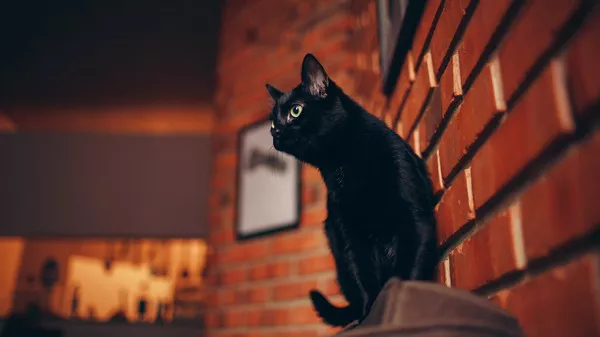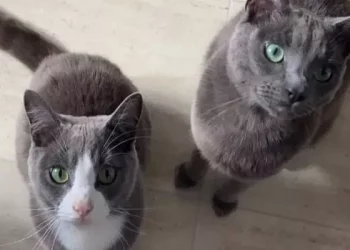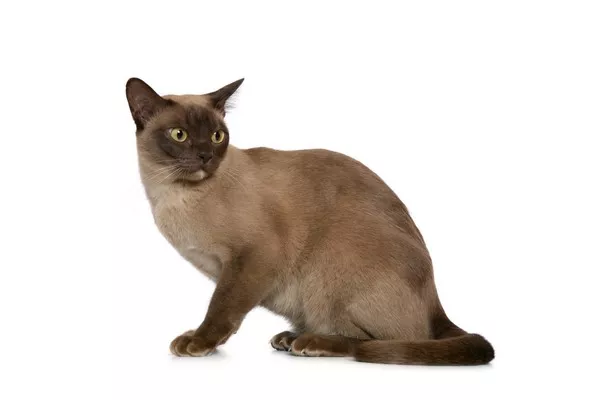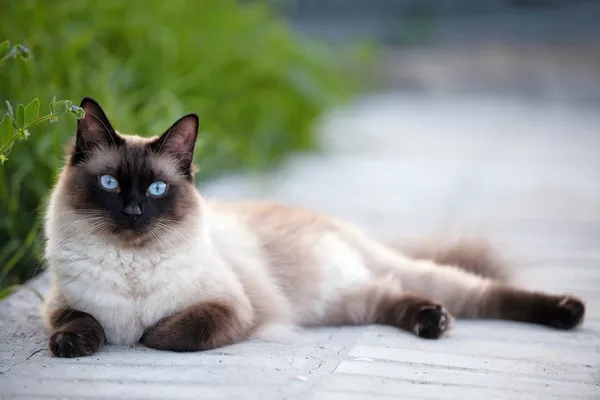Bombay cats are known for their sleek and shiny black coats, resembling miniature panthers. These feline companions are typically associated with short hair, but can they also have long hair? In this article, we will explore the characteristics of Bombay cats and delve into the possibility of long-haired variations within this breed.
1. Understanding Bombay Cats:
Bombay cats are a breed that originated in the United States in the 1950s. They were created by breeding sable Burmese cats with black American Shorthairs to achieve a specific look similar to a panther. Bombay cats are medium-sized with muscular bodies, round faces, and large golden or copper eyes. Their coat is usually short, dense, and has a patent leather-like sheen.
2. Coat Genetics in Cats:
To understand whether Bombay cats can have long hair, it’s important to grasp the basics of coat genetics in felines. The length of a cat’s fur is determined by two main factors: the presence of the longhair gene and the interaction between different genes responsible for coat type.
3. Short-Haired Bombay Cats:
The original Bombay cat breed standard specifies short, close-lying, and glossy fur. This characteristic is achieved by selective breeding. By exclusively breeding cats with short hair, breeders have established a consistent appearance for the Bombay breed.
4. The Possibility of Long-Haired Bombay Cats:
While most Bombay cats have short hair, there have been occasional reports of long-haired individuals within the breed. However, these long-haired Bombay cats are considered rare and not widely recognized as part of the official Bombay breed standards. It’s believed that long hair may occasionally appear due to recessive genes from ancestral breeds present in the Bombay’s genetic background.
5. Other Breeds’ Influence:
The Bombay breed was developed by crossing Burmese and American Shorthair cats. Both of these parent breeds have short hair, which explains why the majority of Bombay cats also have short hair. However, both Burmese and American Shorthair breeds are known to carry the recessive gene for long hair.
6. Crossbreeding and Variations:
When some Bombay cats are crossed with other breeds that carry the longhair gene, such as Himalayans or Persians, it is possible for long-haired offspring to be produced. These cats are not considered purebred Bombays but are often referred to as “Bombay Longhairs” or “Long-haired Bombays” by enthusiasts.
7. Physical Traits of Long-Haired Bombay Cats:
Long-haired Bombay cats exhibit similar physical features to their short-haired counterparts, including their muscular build, round face, and striking golden eyes. The key difference lies in their longer fur, which tends to be softer and more prone to matting if not properly groomed.
8. Care and Grooming:
If you happen to own a long-haired Bombay cat, proper grooming becomes essential to maintain their coat’s health and appearance. Regular brushing sessions will help prevent matting and remove loose hair. Additionally, periodic bathing may be necessary to keep their coat clean and healthy.
9. Recognition and Future Developments:
As of now, long-haired Bombay cats are not officially recognized as part of the breed standard. However, there is ongoing discussion within the cat breeding community regarding the potential recognition of long-haired variations. It remains to be seen whether long-haired Bombays will gain acceptance as an official breed variant.
Conclusion:
Bombay cats are predominantly known for their short, glossy black coats. While rare occurrences of long-haired Bombays have been reported, they are not yet widely recognized as part of the breed. The possibility of long-haired individuals can be attributed to the presence of recessive genes from ancestral breeds in the Bombay’s genetic makeup. If you happen to come across a long-haired Bombay cat, remember that they require regular grooming to maintain the health and appearance of their luscious coat.


























